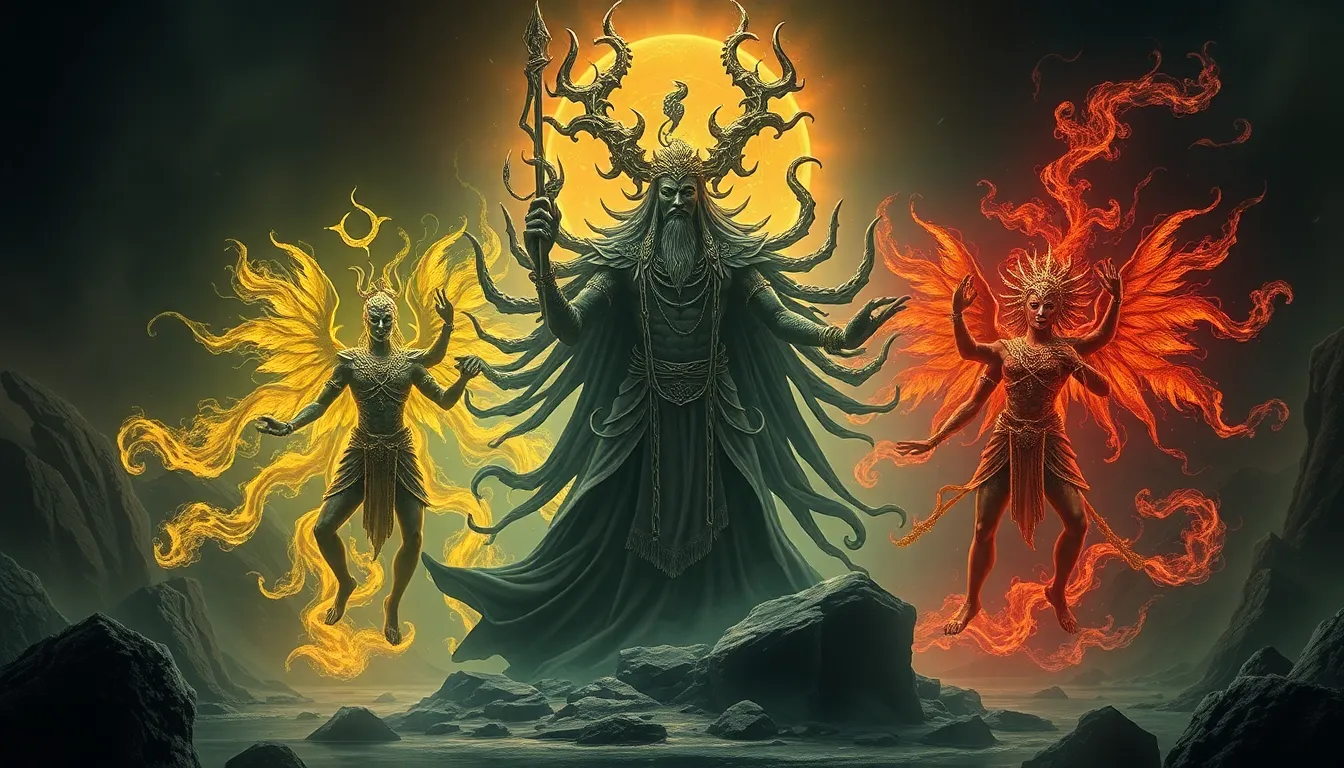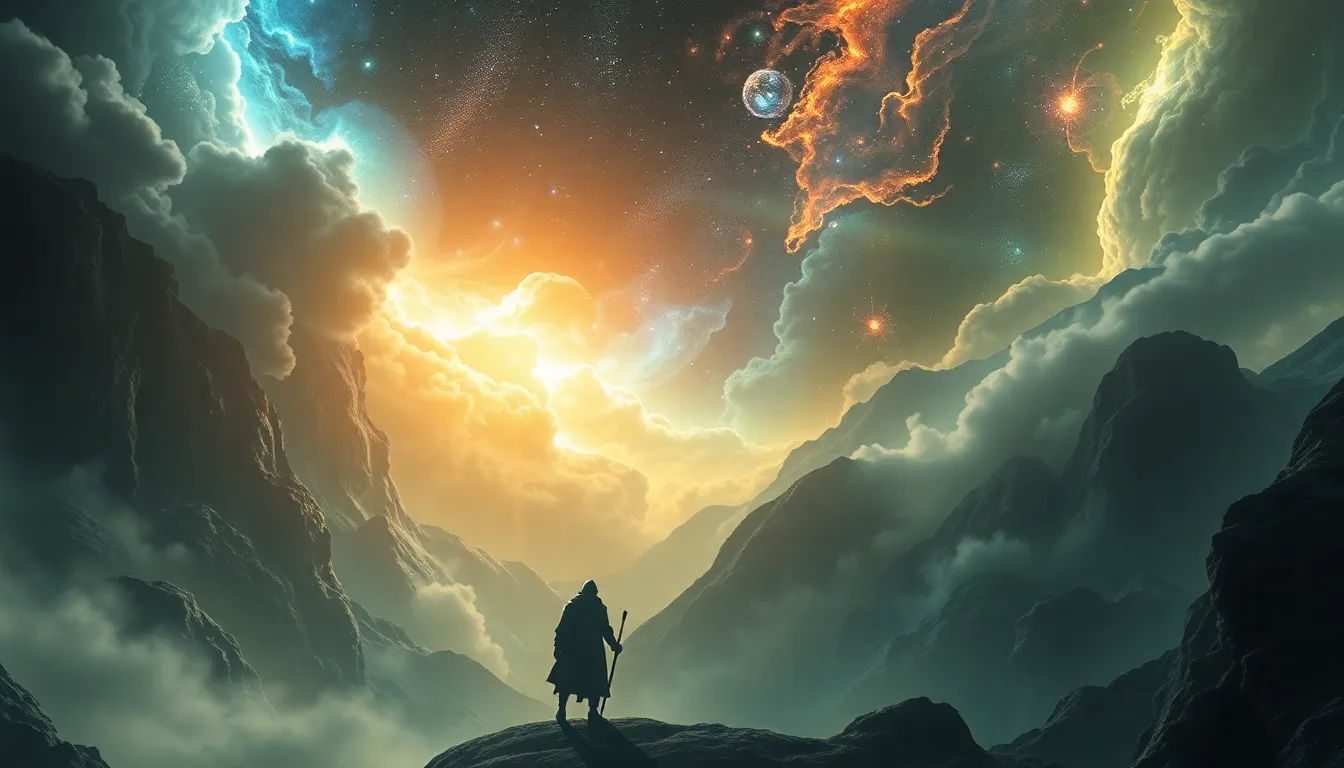Ancient Deities and Their Role in the Cycle of Life and Death
I. Introduction
Ancient deities are divine figures that represent various aspects of existence, including creation, death, fertility, and renewal. These beings were central to the belief systems of many ancient cultures, embodying the forces that govern the universe and human life.
The significance of these deities is profound, as they often reflect the values, fears, and hopes of the societies that worshipped them. They were invoked in times of need, celebrated in rituals, and revered in myths that explained the mysteries of life and death. This article explores the role of ancient deities in the cycle of life and death, shedding light on how different cultures understood these fundamental aspects of existence.
II. The Concept of Life and Death in Ancient Cultures
In ancient cultures, life and death were often viewed not as opposing forces but as interconnected elements of a greater cycle. Perspectives on life and death varied widely, influenced by geography, environment, and cultural development.
The interplay between creation, preservation, and destruction was a common theme. Many societies recognized that for life to flourish, death was necessary, as it made way for new beginnings. This cyclical understanding is evident in their myths and rituals.
Cultural rituals surrounding life and death often included:
- Birth rites that celebrate the arrival of new life
- Funeral ceremonies that honor the deceased and ensure safe passage to the afterlife
- Harvest festivals that give thanks for the bounty of the earth and acknowledge the seasonal cycles of life and death
III. Major Ancient Deities Associated with Creation
Creator deities play a pivotal role in the mythology of many ancient cultures, symbolizing the origins of the universe and the birth of life.
Some prominent creator deities include:
- Gaia (Greek): The personification of Earth, Gaia was considered the mother of all life and was revered as the source of fertility and nourishment.
- Brahma (Hindu): Known as the creator god in Hinduism, Brahma is part of the Trimurti, which includes Vishnu and Shiva, representing creation, preservation, and destruction, respectively.
- Atum (Egyptian): Atum was believed to have created himself and subsequently created the gods and all life, embodying the concept of self-creation and the cyclical nature of existence.
These deities’ narratives often convey deep symbolism related to life, such as fertility, growth, and the interconnectedness of all beings.
IV. Deities Representing Death and the Afterlife
Death deities hold a significant place in mythology, representing the inevitable end of life and the transition to an afterlife.
Examples of such deities include:
- Hades (Greek): Ruler of the Underworld, Hades presided over the dead and was often associated with wealth, as the earth’s minerals were seen as his domain.
- Osiris (Egyptian): Osiris was the god of the afterlife and resurrection, representing the cyclical nature of life, death, and rebirth.
- Yama (Hindu): Yama is the god of death and the afterlife in Hinduism, guiding souls to their next existence and ensuring the cosmic order is maintained.
These deities played crucial roles in guiding souls and shaping beliefs about the afterlife, often reflecting the cultural values surrounding mortality and the continuation of existence beyond death.
V. Fertility and Growth: Deities of Renewal
Fertility deities were especially important in agricultural societies, where the success of crops and the well-being of families depended on the forces of nature.
Notable fertility deities include:
- Demeter (Greek): The goddess of the harvest and agriculture, Demeter was central to the growth of crops and the cycle of seasons, symbolizing nourishment and fertility.
- Freyja (Norse): Freyja was associated with love, beauty, and fertility, embodying the life force and the rejuvenating aspects of nature.
- Ceres (Roman): The Roman equivalent of Demeter, Ceres personified agriculture and fertility, emphasizing the importance of harvest and sustenance.
The symbolism of these deities often reflects the themes of rebirth and seasonal cycles, highlighting the connection between life, death, and renewal in nature.
VI. The Balance of Life and Death: Duality in Deities
Some deities embody both life and death, representing the duality and balance necessary for cosmic harmony.
Examples of such deities include:
- Kali (Hindu): Kali is a goddess of destruction and transformation, symbolizing the fierce aspect of life that clears the path for new growth.
- Persephone (Greek): As the queen of the Underworld and goddess of spring, Persephone embodies the duality of life and death, representing seasonal rebirth and the cycle of nature.
- Anubis (Egyptian): The god of mummification and the afterlife, Anubis guides souls through the process of death and rebirth, maintaining the balance between worlds.
These deities illustrate the significance of maintaining cosmic balance, emphasizing that life and death are not merely opposites but essential components of existence.
VII. The Role of Mythology in Understanding Life and Death
Myths serve as a crucial means of conveying cultural values related to life and death. They provide frameworks for understanding the human experience, addressing existential questions and moral dilemmas.
Myths fulfill educational purposes, teaching generations about the importance of harmony between life and death, the significance of rituals, and the inevitability of mortality.
Moreover, the influence of mythology extends into contemporary beliefs, shaping modern views on spirituality, life after death, and the natural order of the universe.
VIII. Rituals and Worship: Honoring Life and Death
Ancient cultures engaged in various practices to honor their deities, reflecting their beliefs about life and death.
Common practices included:
- Ritual sacrifices to appease gods and ensure prosperity
- Festivals celebrating the changing seasons and agricultural cycles
- Funeral rites that included offerings and rituals to honor the deceased
These rituals reinforced the connection between the divine and human experience, emphasizing the importance of acknowledging both life and death in the cycle of existence.


